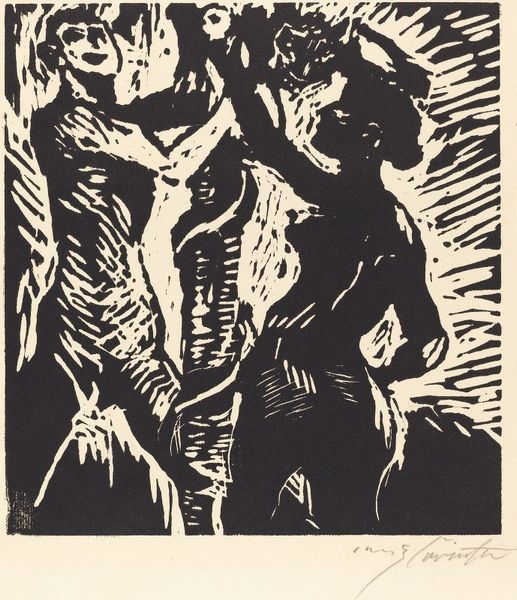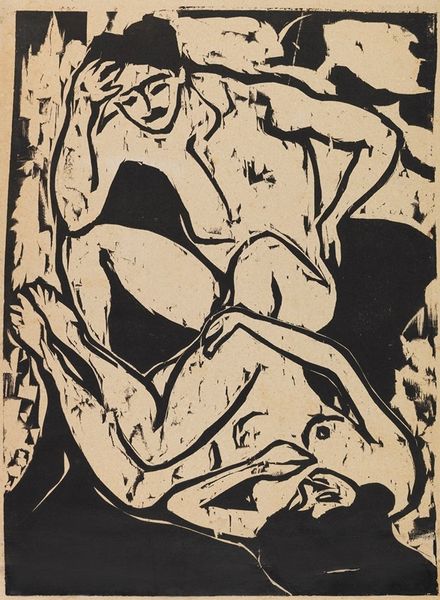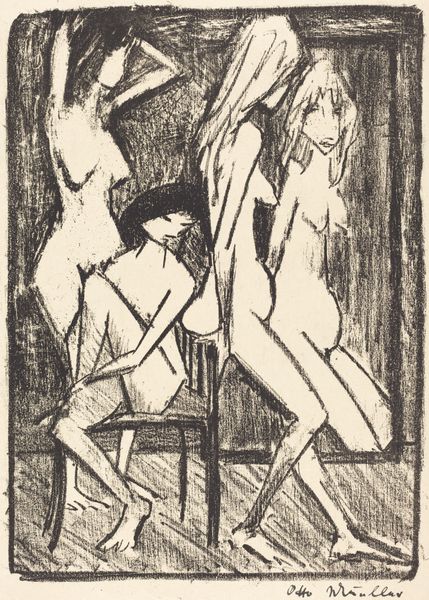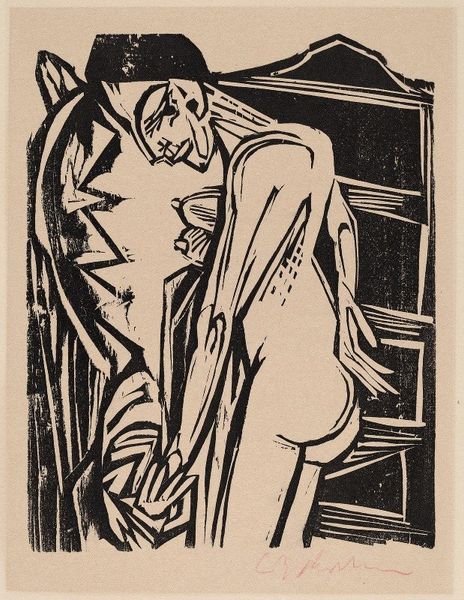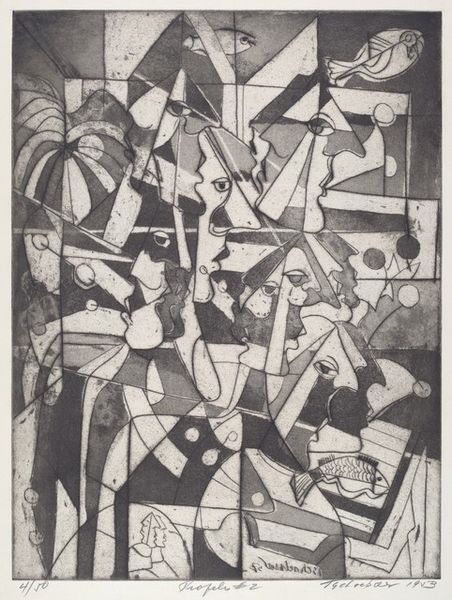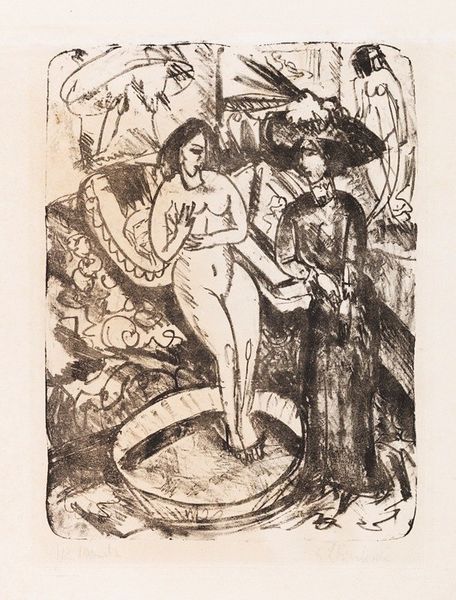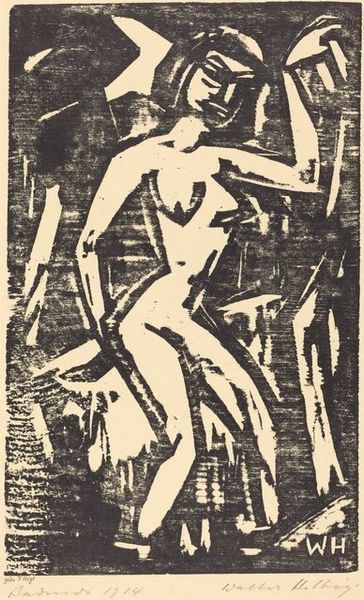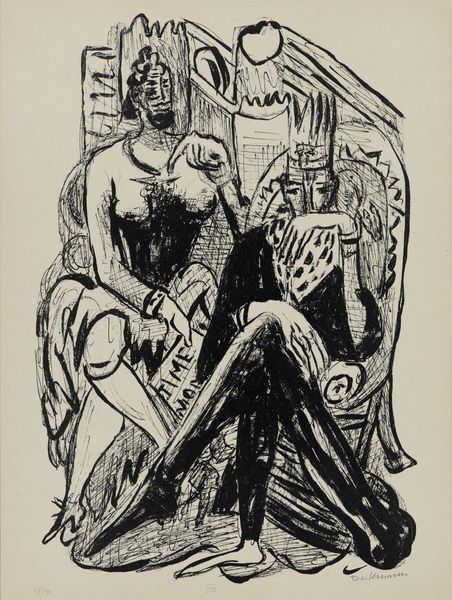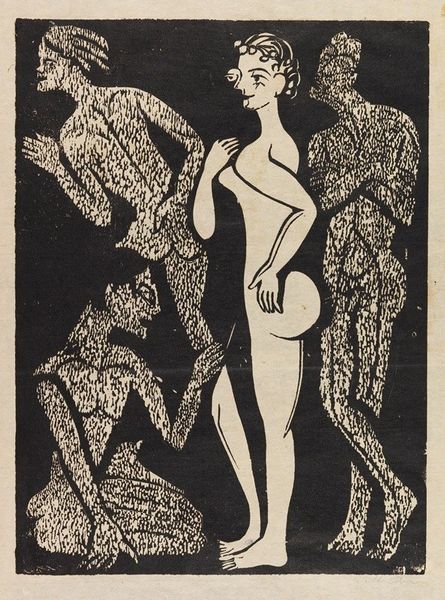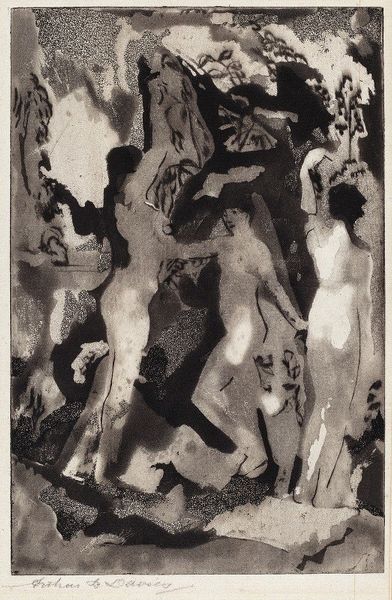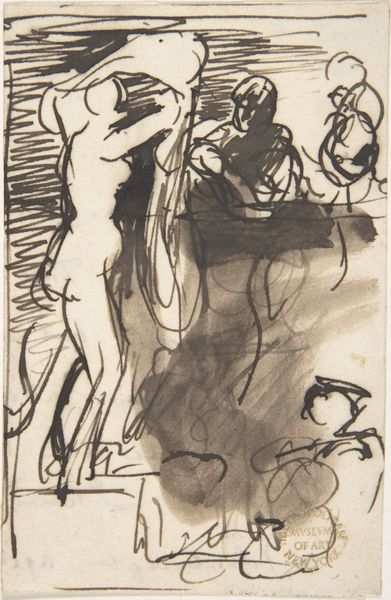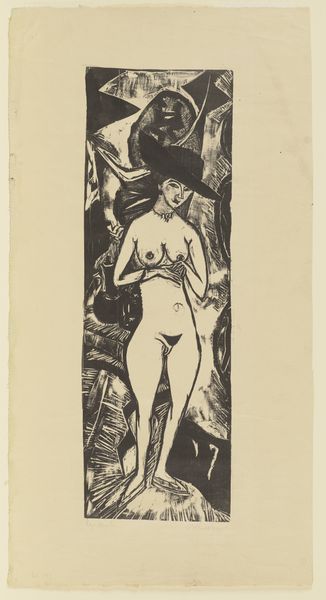
print, etching, ink
#
narrative-art
# print
#
pen illustration
#
etching
#
german-expressionism
#
figuration
#
ink line art
#
ink
#
expressionism
#
line
#
history-painting
Dimensions: plate: 22.7 x 19.1 cm (8 15/16 x 7 1/2 in.) sheet: 42 x 32.9 cm (16 9/16 x 12 15/16 in.)
Copyright: National Gallery of Art: CC0 1.0
Curator: Arminius Hasemann created this print, titled "Totentanz," in 1921. Editor: It has an immediate intensity. The sharp contrast between light and dark creates a chaotic, almost claustrophobic atmosphere. Curator: The artist chose etching, using ink to capture an unsettling dance with death, a very powerful reminder of the pervasiveness of mortality during the interwar years. The horrors of World War I and the Spanish Flu epidemic profoundly shaped artistic consciousness. Editor: Look at the linework—so decisive! It builds up the tension and renders forms. It creates a fragmented, distorted effect, typical of German Expressionism. See how the figures emerge from the darkness? There are stark contrasts which are creating both a disturbing and mesmerizing effect. Curator: Precisely! Hasemann taps into a long history of "danse macabre" imagery but gives it a contemporary, critical edge. It feels less like a moralizing allegory, and more like a scream of collective trauma, a visualization of societal breakdown and its lasting effects on personal well-being. Editor: The composition feels so imbalanced, doesn't it? Figures are cropped, and almost dissolving. There's a definite play with perspective—or a rejection of it, rather. And those piercingly vacant skulls! They become a kind of motif that ties the whole, disjointed image together. Curator: "Totentanz" becomes a poignant reflection of how personal experiences intertwine with broader social and historical realities. It’s important to note how art of this period really attempted to picture the unspeakable, in doing so offering a means of collective grieving. Editor: It speaks to the formal ingenuity of expressionism— the rejection of traditional form, embraced here to underscore existential and psychological disturbance, an effective visual metaphor for unease. Curator: The dialogue between form and content gives his visual rhetoric strength to present ongoing issues about social and health concerns, in this image "Totentanz" encourages discussions on death and representation. Editor: Yes, an enduring example of the Expressionist aesthetic with stark lines expressing chaos and disorder, reflecting societal and psychological pressures.
Comments
No comments
Be the first to comment and join the conversation on the ultimate creative platform.
